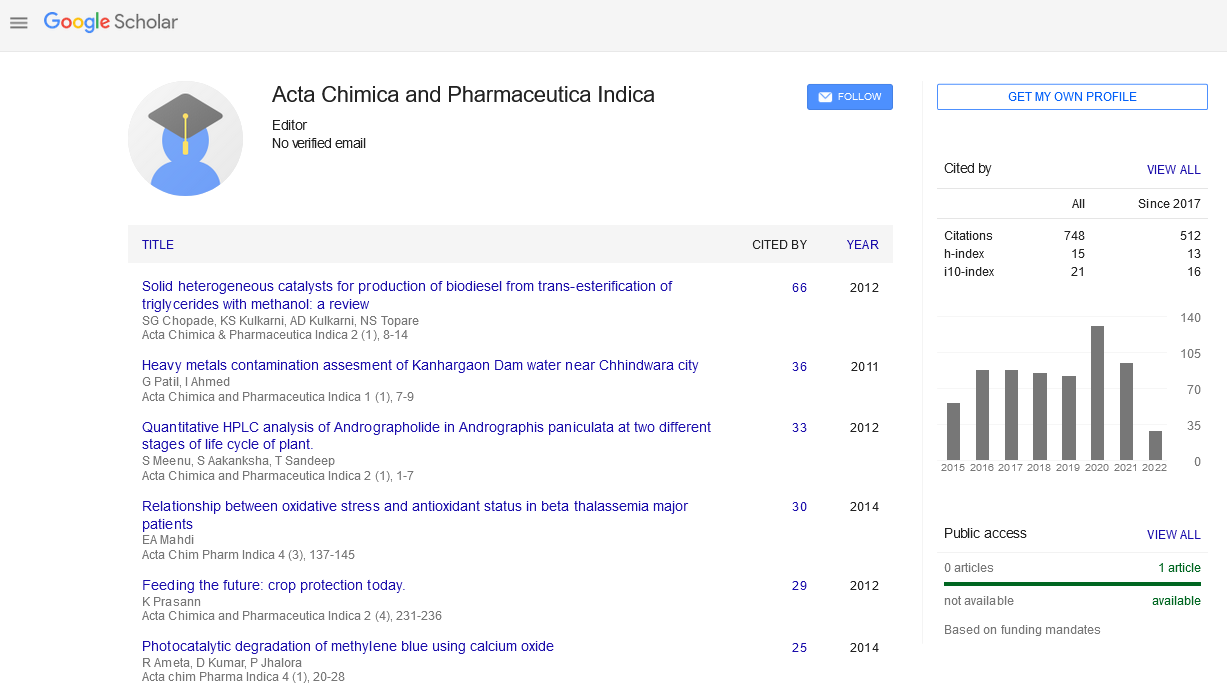Abstract
Evaluation of Carcinogenic and Non-Carcinogenic Risk of Cadmium and Nickel in Land Snails (A. Achatina and L. Flammea) and Marine Snails (P. Aurita and T. Fuscatus) Commonly Consumed In Nigeria
Author(s): Douye P Markmanuela and Michael Horsfall Jnr*The Carcinogenic and non-carcinogenic health risk of Cd and Ni in Land Snails (A. achatina and L. flammea) and Marine Snails P. aurita and T. fuscatus) commonly consumed in Nigeria were investigated. The metal concentrations were determined using atomic absorption spectrometer (GBC Avanta 2.02 model). The results of the mean concentrations (mg kg-1 dry wt basis, mean ± SD) of Cd were 17.8 ± 4.37 (A.achatina), 6.3 ± 0.47 (L. flammea), 2.1 ± 0.26 (P. aurita) and 2.8 ± 0.64 (T. fuscatus), while Ni values were; 16.7 ± 5.03 (A. achatina), 7.3 ± 1.04 (L. flammea), 17.7 ± 7.68 (P. aurita) and 11.3 ± 1.65 (T. fuscatus), respectively. The mean concentrations of Cd and Ni in the Snail samples were higher than the acceptable limits set by WHO, FAO, FEPA and EU. For Cd the mean concentrations are in the decreasing order of A. achatina > L. flammea > T. fuscatus > P.aurita, while Ni mean concentrations are in the order of P. aurita > A.achatina > T. fuscatus > L. flammea. The provisional tolerable daily and weekly intake (PTDI and PTWI) of Cd estimated in this study were all higher than the limits set by WHO and FAO, while for Ni, A.achatina and P.aurita were higher than the limits of WHO and FAO, and L. flammea and T. fuscatus were lower than the limits. For the non-carcinogenic and carcinogenic risk evaluation, the results showed that the hazard index, HI ( Sum of THQ) for all the snail samples were higher than the acceptable limits of 1 set by USEPA. The HI values are in the decreasing order of A. achatina > L. flammea > T. fuscatus > P. aurita and the risk values were 7.67, 2.74, 1.22 and 1.38 with Cd been the major risk contributor, contributing up to 70-95% of the HI values. This is a source of concern considering the fact that excessive consumption of these snails may lead to severe chronic cadmium poisoning. Also, the target Cancer risk (TR) values for Cd and Ni in all the Snail Samples were higher than the acceptable limits of 10-6 – 10-4 established by USEPA, indicating a potential health risk effects to consumers. Therefore, moderate intake of these snails from Bayelsa State is strongly recommended to consumers

